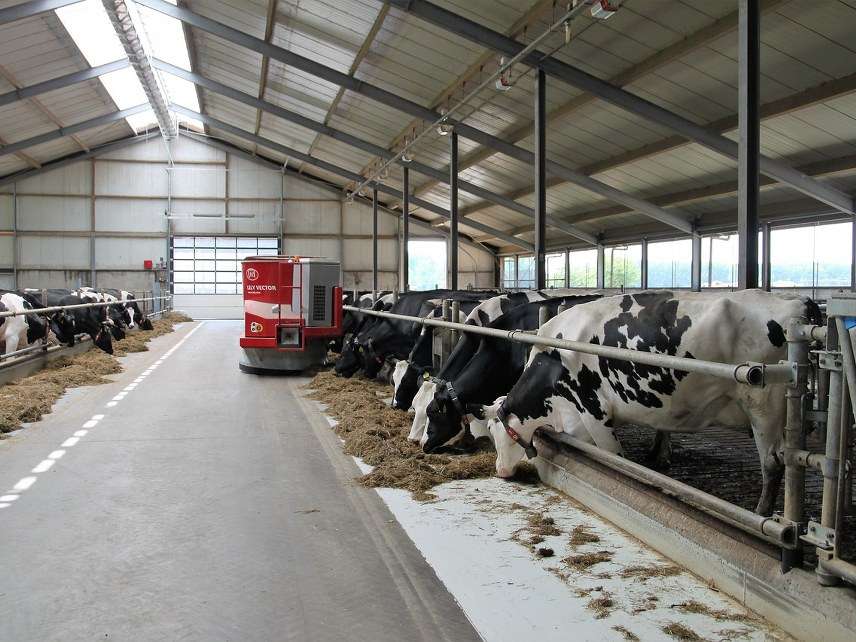Current Farm Bill Waste Targeted as Congress Moves Toward Next Farm Bill
Two new efforts in Washington seek to rein in the subsidies.

As Congress ramps up plans to renew the quinquennial Farm Bill next year, two separate efforts in Washington this month called for cuts to wasteful spending enabled by the stinky current Farm Bill. Both efforts—one a bill introduced last week, the other a report released this week—are making waves.
The Farm Bill, in part, is intended to set federal farm policy for the next five years. While taxpayer-funded payments to farmers—farm subsidies—have under past farm bills always been wasteful, subsidies under the most recent Farm Bill grew by billions of dollars.
Last week, Congress sought to rein in a portion of the out-of-control spending it enabled in 2014 when it passed the latest Farm Bill. A new, bi-partisan bill, dubbed the Harvest Price Subsidy Prohibition Act, was introduced in the Senate by Sen. Jeff Flake (R-Ariz.) and Sen. Jean Shaheen (D-N.H.). The bill—a companion was also introduced in the House—would eliminate the Harvest Price Option (HPO), a subsidy (tied to already subsidized crop insurance) that guarantees a higher price for farmers at harvest if their crop's price rose after planting.
If that sounds needlessly confusing, it is. The short of it is, as Sen. Flake says, is that the HPO acts as "a taxpayer-subsidized profit guarantee."
No business—small or large, farm or industrial, rural or urban—should have its profitability guaranteed by the government. Why not?
"HPO is like insuring your car for $5,000, and getting a check for $10,000 after it's totaled," says Sen. Flake. "It's the kind of program that only makes sense in Washington."
The HPO program has cost taxpayers more than $21 billion.
Along similar lines, a report issued Tuesday by the Environmental Working Group, which monitors and criticizes farm subsidies, exposes how two other Farm Bill-enabled programs waste billions more.
The EWG report, "Double Dipping: How Taxpayers Subsidize Farmers Twice for Crop Losses," focuses on two Farm Bill programs, known as Agricultural Risk Coverage (ARC) and Price Loss Coverage (PLC). Farmers who receive taxpayer-subsidized crop insurance may still choose to participate in either ARC or PLC, even though "all three programs essentially pay subsidies for exactly the same reasons."
According to the EWG report, hundreds of thousands of farmers have taken advantage of the loophole by double dipping. That's put American taxpayers on the hook for nearly $24 billion in unnecessary double payments to farmers.
"Farm state politicians sell farm subsidy programs to taxpayers on the premise that they help keep family farmers on the land," said Don Carr, a senior advisor with the Environmental Working Group, in an email to me this week. "But when year after year the same well off mega farms enjoy millions in redundant subsidies while the bruising agriculture economy continues to drive small and mid-sized farmers out of business, it becomes clear that the original intent of these programs has strayed way of course."
These out-of-control giveaways are even more galling because the current Farm Bill was touted as the one that would help rein in spending. (To be clear, though, pretty much every Farm Bill is touted by Congress and lobbyists as a cost-saving measure.)
Farm Bill critics, including me, predicted growing waste under the current Farm Bill.
"During the most recent debates over passage of a Farm Bill, Sen. Thad Cochran (R-Miss.) urged support for crop insurance, which he referred to as a set of 'important risk management tools for farmers and ranchers nationwide' that 'can help reduce costs,'" I detail in my recent book, Biting the Hands that Feed Us: How Fewer, Smarter Laws Would Make Our Food System More Sustainable. "Sen. Debbie Stabenow (D-Mich.), who chaired the Senate Agriculture Committee, of which Sen. Cochran is also a member, lauded the Farm Bill as 'an opportunity to cut spending.' That's not how it's worked out. Rather, costs have skyrocketed under the new Farm Bill thanks to crop insurance subsidies."
Wasting taxpayer dollars is but one negative outcome of subsidizing farmers. Farm subsidies also—and here I'll urge you to buy my book, which provides far more details than a column permits me to share—stifle innovation, harm the environment, needlessly reward not just soy, cotton, corn and other commodity farmers but also everyone from livestock producers to GMO seed companies to crop insurers; and encourage farmers to overproduce quantities of crops we don't particularly want or need.
The Trump administration proposed earlier this year to cut farm subsidies by a couple billion dollars a year, angering many farmers and lobbyists. But $2 billion in cuts is a drop in the bucket for programs that now waste more than $20 billion per year.
American farmers and taxpayers alike can live without HPO, ARC, PLC, and the Farm Bill's confusing array of acronyms of waste. Looking at the bigger picture, we'd also be far better off without any Farm Bill at all.


Show Comments (32)